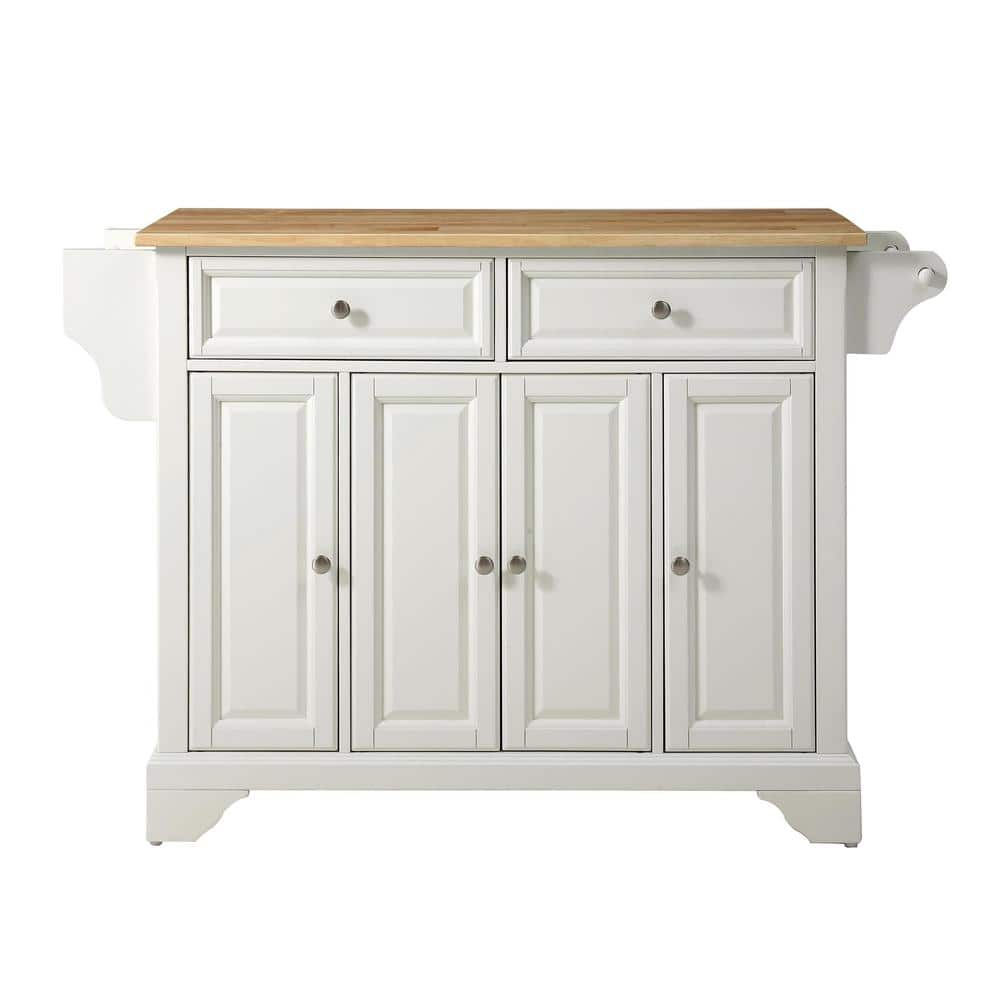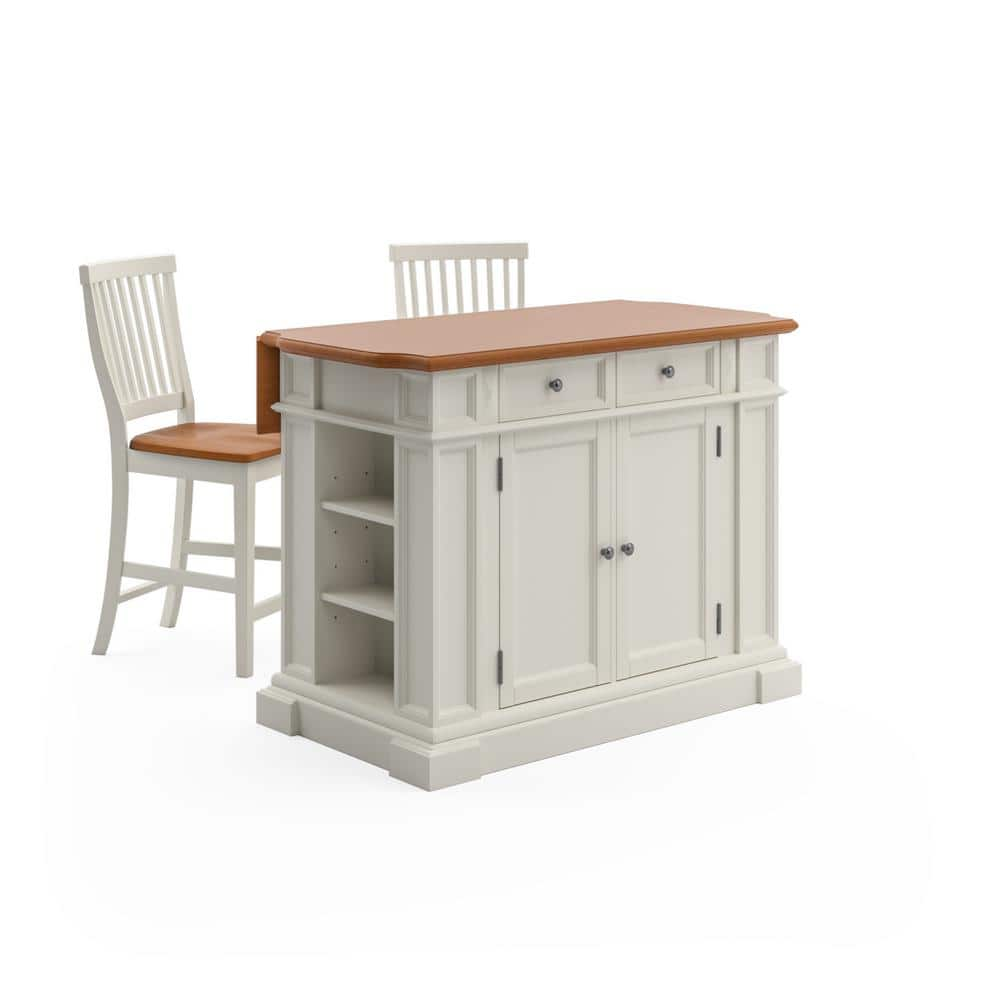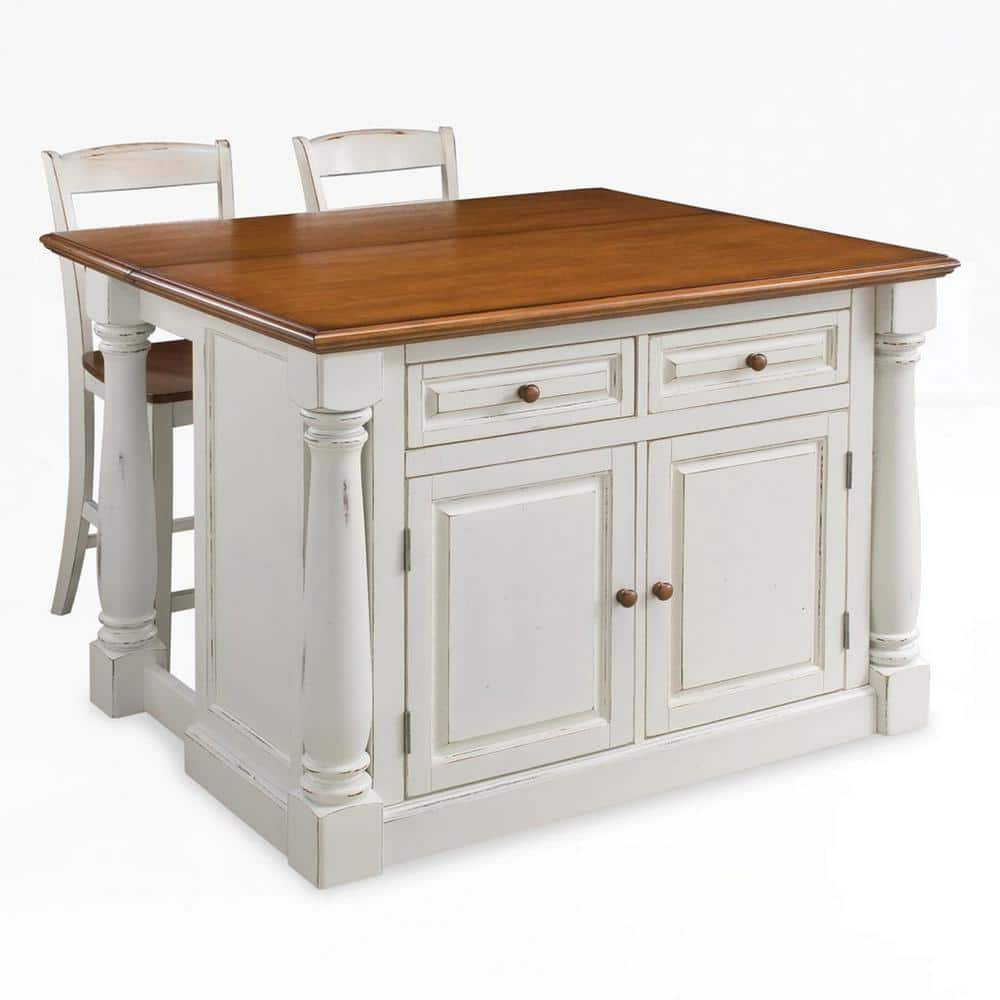CROSLEY FURNITURE Lafayette White Kitchen Island with Wood Top
Solid wooden construction allows prolonged use. Adjustable shelf inside cabinet. Towel bar offers enhanced functionality.
Constructed of solid hardwood and wood veneers, this kitchen island is designed for longevity. The beautiful raised panel doors and drawer fronts provide the ultimate in style to dress up your kitchen. 2-deep drawers are great for anything from utensils to storage containers. Behind the four doors, you will find adjustable shelves and an abundance of storage space for things that you prefer to be out of sight. Style, function, and quality make this kitchen island a wise addition to your home.
- Transitional design
- Solid wood top with natural finish
- Constructed of solid hardwood and wood veneers
- Hand rubbed, multi-step finish
- Brushed nickel hardware
- 3-adjustable shelves inside cabinet
- Spice rack with towel bar
- Towel bar/paper towel holder
Additional information
| Dimensions | H 36 in, W 51.5 in, D 18 in |
|---|---|
| Depth | Narrow (Under 21 in.) |
| Width | Standard (40-55 in.) |
| Manufacturer Warranty | 90 Day Replacement Part Warranty, No Returns |






by Chaser
Looks great. Fairly easy to assemble.
by Brenda
After realizing that Part A was actually the granite top, assembly went smoothly. I would recommend two people to assemble. Together, it took about 2.5 hours to put together. So far, I love it! I am using it in place of my old microwave cart and to store serving dishes, etc.
by Niraj
Perfect item i looked for.
by Jan
Great looking sturdy piece. However be aware it does take a bit to assemble.
by Robert
draws didn’t open far enough.
by Charlie
Very please with my order.
by Xandra
Looks great, material used not top quality, but sturdy enough.